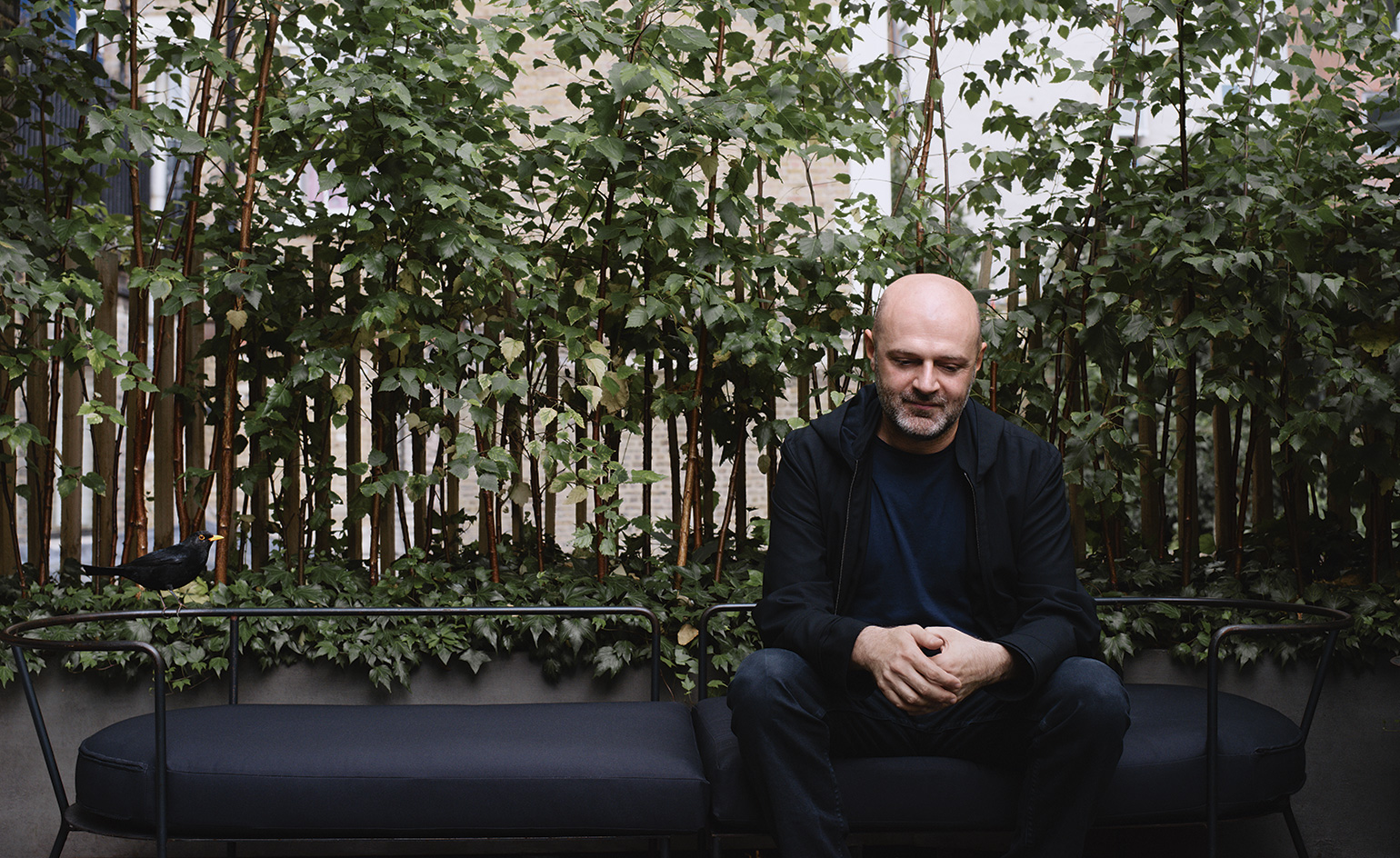
Alessandro Michele’s Gucci is a harbinger of change in the fashion industry. In barely 18 months, his work has perceptibly moved goalposts and his impact is hard to overstate, certainly when it comes to recent fashion. Indeed, you’d have to dive back to the 1990s to find anything similar. Ironically, if you do so, you’ll find it was once again at Gucci that the status quo shifted, under the tenure of Tom Ford. Exactly 20 years apart, both used the Italian leather goods behemoth to ring in the changes, to provoke, challenge and ultimately seduce. Both have proved, within the space of mere seasons, to be the dominant fashion stories of their respective periods.
Michele and Ford’s visions for Gucci, on the surface, are polar opposites. Indeed, Michele’s obsession is with elaborating his surfaces, in homage to the Italiano eccentrico styles commonly associated with designers like Walter Albini, the interwar couturier Elsa Schiaparelli or the Milanese fashion editor Anna Piaggi. It stands in stark contrast to Ford’s midcentury modern-tinged minimalism, the sartorial equivalent of an Eames lounger, of lean tailoring and jersey evening dresses with insets of metal. Slick was the word most often used to describe Ford’s vision for Gucci, from the shiny polished catwalks of his biannual shows through to the glistening double-G insignias dripping from bags and belts. There’s nothing slick about what Michele does – it’s more sick, a mix of oddball references and strange proportions that have some beauty to them, to hamfistedly paraphrase Sir Francis Bacon.
Yet there are threads that run through both, weaving these two disparate versions of Gucci tightly together. Both, for instance, are obsessed with the 1970s: Ford harking back to the clingy jersey clothes of Halston, dressing a Studio 54-roaming glamourpuss; Michele to something more downbeat, less polished.
‘The 1970s is the most powerful image, for me, for the brand,’ Michele tells me after his winter 2016 menswear show. ‘Its soul is really that 1970s moment, that jet-set. It’s something that lets you dream.’ Michele dreams of a decorated, flamboyant 1970s a million miles from Ford’s American-bred but European-polished glamour. But their silhouettes – kicked-out flares, column evening dresses, the short, broad-shouldered fur jackets known as chubbies that owe a debt to the architect of the decade, Yves Saint Laurent – are similar.
But then, Ford, after all, was Michele’s mentor, recruiting him to the label in 2002. Michele has paid overt homage in numerous ways: his first menswear show in January 2015 featured model Molly Bair in a petrol-blue silk-satin shirt with black trousers and a double-G belt, a direct throwback to Ford’s A/W 1995 Gucci show, where Kate Moss (and later Madonna) sported a near identical outfit. More recently, a bevy of Ford’s greatest Gucci hits – embroidered denim jeans, cherry-red and inky velvet trouser suits, those white jersey Halston redux dresses – has been installed, at Michele’s behest, at the Gucci Museo.
Both Michele and Ford think further than fashion. Ford’s Mario Testino-shot advertising campaigns of the 1990s weren’t just trying to hawk a bunch of clothes, but a set of ideals. Gucci may not have made the furniture the models sprawled across, but you still wanted to buy it. Later, Gucci sold branded spanking-paddles, dog-collars and handcuffs – a sexual decadence synonymous with Ford’s fashions. Michele is creative director of the Italian fine porcelain brand Richard Ginori. The latest range of Ginori plates, hand-painted with the kind of exotically plumed parrots that flock his clothes, are his postmodern spanking paddle.
Ironically, for all that aforementioned sex, there was a sense of androgyny to Ford’s Gucci. Those advertising campaigns frequently featured writhing bodies entwined to the point of gender ambiguity: guys, girls, or both? For A/W 1996, Georgina Grenville and Ludovico Benazzo embraced dressed identically in pinstripe trouser suits, shirts open to the navel. Michele’s Gucci, too, is obsessed with blurring distinction between the sexes – his A/W 2015 menswear show saw long-haired boys and gangly girls mixed on the catwalk to a point of glorious confusion.
The element that most unifies Ford and Michele, though, is their complex, consummate and complete vision for Gucci. From the brand’s boutiques (minimalist temples under Ford; maximalist boudoirs under Michele) to the clothes’ packaging (Michele’s shoeboxes roam with Victoriana jungle murals; Ford sold sheer underwear in Perspex boxes) every facet expresses a breathtaking totality of aesthetic. It’s not lifestyle they’re selling, so much as a style of life. It worked in 1996, and it’s working again today.
Tom Ford and Alessandro Michele are part of our 20 Game-Changers. Read about the other 19 here
As originally featured in the October 2016 issue of Wallpaper* (W*211)
INFORMATION
For more information, visit the Gucci website
Receive our daily digest of inspiration, escapism and design stories from around the world direct to your inbox.
-
 Deep dive into Carlos H Matos' boundary-pushing architecture practice in Mexico
Deep dive into Carlos H Matos' boundary-pushing architecture practice in MexicoMexican architect Carlos H Matos' designs balance the organic and geometric, figurative and abstract, primitive and futuristic
-
 Click to buy: how will we buy watches in 2026?
Click to buy: how will we buy watches in 2026?Time was when a watch was bought only in a shop - the trying on was all part of the 'white glove' sales experience. But can the watch industry really put off the digital world any longer?
-
 Don't miss these art exhibitions to see in January
Don't miss these art exhibitions to see in JanuaryStart the year with an inspiring dose of culture - here are the best things to see in January
-
 Gucci furniture collection interprets past icons through a contemporary lens
Gucci furniture collection interprets past icons through a contemporary lensSabato De Sarno launched his first furniture collection, Gucci Design Ancora, reissuing five 20th century pieces by designers whose work helped make Milan the design capital it is today
-
 Gucci’s ‘Design Ancora’ reimagines furniture classics in rich red
Gucci’s ‘Design Ancora’ reimagines furniture classics in rich redGucci launches new editions of Italian design icons in an alluring deep red, showcased during Milan Design Week 2024
-
 Making it: with a thriving ‘maker’ culture, Shenzhen is becoming a creative capital of China
Making it: with a thriving ‘maker’ culture, Shenzhen is becoming a creative capital of China -
 Kazuyo Sejima: from light engineer to architectural heavy hitter
Kazuyo Sejima: from light engineer to architectural heavy hitter -
 Jorge Pérez: from Miami mogul to Cuban art champion
Jorge Pérez: from Miami mogul to Cuban art champion -
 Multi-platform player: Hussein Chalayan lends new form to film, dance and art
Multi-platform player: Hussein Chalayan lends new form to film, dance and art -
 Bernardo Paz: from mining magnate to gardener of earthly delights
Bernardo Paz: from mining magnate to gardener of earthly delights -
 Game-Changers: we pick our top 20 creative world-rockers
Game-Changers: we pick our top 20 creative world-rockersIn 20 remarkable years we have come across, written about, examined and exhumed a lot of remarkable people. On the following profiles are 20 of them. This, though, is not a simple ranking of power and influence. These are stories that resonate, with which we find common purpose and cause. Here are people who have sometimes stuck bloody-mindedly to a course, sometimes pivoted, re-examined and pushed in new directions, who have defied expectations and even open derision. They have shown courage under fire and grace under pressure. They have transformed – from girl group popette to one of the fashion industry's smartest operators, for instance – and, over the last 20 years, have had a transformative influence in their field. Here are architects who build with a sense of the immaterial, artists who want to talk to everyone, experimentalists and food engineers, fashion designers who defy fashion and bob and weave like prize fighters, tech titans who have changed the way we do almost everything. One reinvented the hotel industry, another presents it with an existential threat. There is also a man who wants to save the world – or take us all to Mars if that doesn't work out. Either way, we'll be along for the ride.